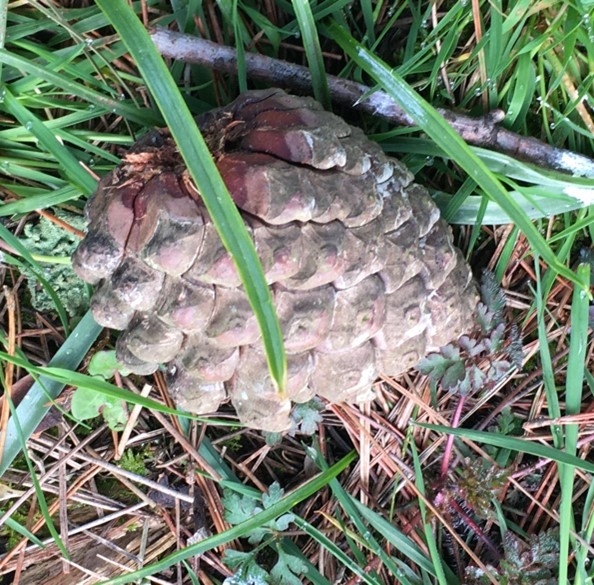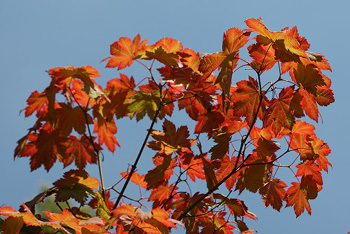The Friends' Quiz: Autumn-Winter 2023
Are you ready to put your knowledge to the test? Take our member's quiz and see how much you really know about Westonbirt Arboretum.
Scroll or click here to find quiz answers.
Quiz Questions
The Old Arboretum
1. How many Rhododendron loderi are planted at map reference F17?
a. One
b. Seven
c. Eight
2. What is the name of the space-related magnolia near the large, sculptural Western red cedar on Main Drive between Pool Gate and Duke’s Cut Gate?
a. Sputnik
b. Venus
c. Star Wars
3. What does the sign say at the Westonbirt Troll Bridge? (Not the Treetop Walkway!)
a. Shh ....don’t wake the Troll
b. Quiet, Troll asleep
c. Troll on holiday
4. The Arboretum has 10 specimens of the Wollemi pine but only one of these was planted by David Noble; the person who first rediscovered it. Where is it located?
a. A. Loop Walk/2050 Glade
b. Circular Drive
c. Specimen Avenue
Silk Wood
5. A pair of slender trees form an elegant ‘gateway to Sand Earth. What species are they?
a. Corsican Pine
b. Norway Spruce
c. Scots pine
6. What is special about the Sargent’s Cherry on Broad Drive (Map ref L12)
a. It has blue blossom
b. It is the only Sargents cherry at Westonbirt
c. It is held together with wire and rope

a. Coastal Redwood
b. Monterey Pine
c. Douglas Fir
8. In 2021 the Tree Team instigated a major felling programme. Roughly how many ash trees were removed from Silk Wood?
a. 1,000
b. 3,000
c. 5,000
The Downs and Arboretum wide
9. There are nine species of wild orchid at Westonbirt. One is the rare Bird’s-nest Orchid. Why is it so called?
a. Birds use its leaves to line their nests
b. It is used in China as an ingredient for bird’s-nest soup
c. It’s roots resemble a bird’s-nest
10. Why is Yellow Rattle a valuable plant on the Downs at Westonbirt?
a. The seeds are a nutritious food for birds
b. It is parasitic on the roots of grass
c. It is a rich source of nectar for bees
11. These are all found at Westonbirt: Which is the odd one out?
a. Snake’s-head Fritillary
b. Marbled White
c. Silver washed Fritillary
12. The Arboretum is home to a number of National Collections. Which of these species are included?
a. Oak
b. Spruce
c. Bladdernut
Quiz Answers
Easy
1. Answer A: One
This rhododendron is actually just one plant but looks like a lot more. Some trees do this naturally. Good examples include the Oriental Plane on the north side of Mitchell Drive or a little further on, on the same side a Lawson cypress, just after the junction with Specimen Avenue.
2. The unlikely answer is C. ‘Star Wars’
Magnolia liliiflora has been hybridised with many species and has produced fantastic results. Oswald Blumhardt of Whangarei New Zealand, raised this Magnolia in the 1970s. He named it Star Wars because its tepals point in all directions. Take a look in the Arboretum Explorer and you will find lots of unusual names. For example there is an Acer on Maple Loop known as Miss Piggy!
3. Answer A: Shh ....don’t wake the Troll.
In case you haven’t discovered this little bridge you will find it between Pool and Duke’s Cut Gates. It spans the Ha-Ha separating the Downs and the Old Arboretum. Go across it and proceed a little further into the Old Arboretum and you will encounter a little ‘cone mountain’. Have fun!
4. Answer C: Specimen Avenue
This species was discovered in a remote canyon about 150 km from Sidney Australia. Originally this tree grew extensively in Australia, New Zealand and Antarctica. It was thought to have become extinct some 40 million years ago. It required examination of fossil records of that date to identify this exciting find.
Silk Wood
5. Answer A: Corsican Pine
Pines are identified by their thin needles which grow in bunches of two, three or five. The Corsican Pine (Black Pine) with its bunches of two needles produces strong timber and promises to be a successful tree in response to climate change. However it is susceptible to red needle blight which means that its future is much less certain.
6. Answer C: It is held together with wire and rope
This tree was named after the American botanist Charles Sprague Sargent who was the first Director of Harvard University’s Arnold Arboretum.
7. Answer B: Monterey Pine
Some trees, including the Monterey Pine, only drop their cones in certain conditions. In this case when exposed to heat from a forest fire or very high winds. Otherwise their cones can remain on the branch for many years.
8. Answer C: about 5,000
Chalara ash dieback originated in East Asia and was first discovered in Poland in 1990. It then spread around Europe reaching England in 2008. It was first identified at Westonbirt in 2015. Having clear-felled ash in Silk Wood, Westonbirt now has the rare opportunity to engage the community in a major re-planting programme of some 9000 trees.
Trickier
9. Answer C. The tangled roots of this orchid do resemble a badly made bird’s nest.
Another interesting feature of this plant is that it has no chlorophyll and therefore is unable to make it’s own food by photosynthesis. It is parasitic on the micorrhizal fungi connected to its roots . It digests the fungi thus obtaining the carbohydrates given to them by the trees in exchange for mineral nutrients.
10. Answer B: It is parasitic on the roots of grass
It is a parasite on the roots of grass and this has the effect of suppressing the dominant grasses thus enhancing the environment in which wild flowers may flourish and grow. It is no wonder that it has acquired the nickname of ‘Meadow Maker’.
11. Answer A: Snake’s-head Fritillary
The other two are butterflies! This plant has a host of common names in addition to Snake’s-head: These include: Chess flower, Frog cup, Guinea-hen flower, leper lily and more. It is native to the Europe and Western Asia and grows in grasslands in damp soils and river meadows. It was once abundant in UK particularly in the Thames Valley and parts of Wiltshire being sold in markets as a popular cut flower.
12. Answer C: Bladdernut
The National Collection scheme involves individuals or organisations undertaking to document and preserve a collection of a group of plants in trust for the future. Westonbirt has five national Collections:
- Japanese maple cultivars
- Maple species
- Lime Species
- The Walnut family
- Bladdernut
How did you do?
0-4 Seedling - keep growing your Westonbirt knowledge!
5-8 Sapling - your Westonbirt knowledge is branching out nicely!
9-12 Mighty Oak - you're a true Westonbirt expert, keep up the great work!
